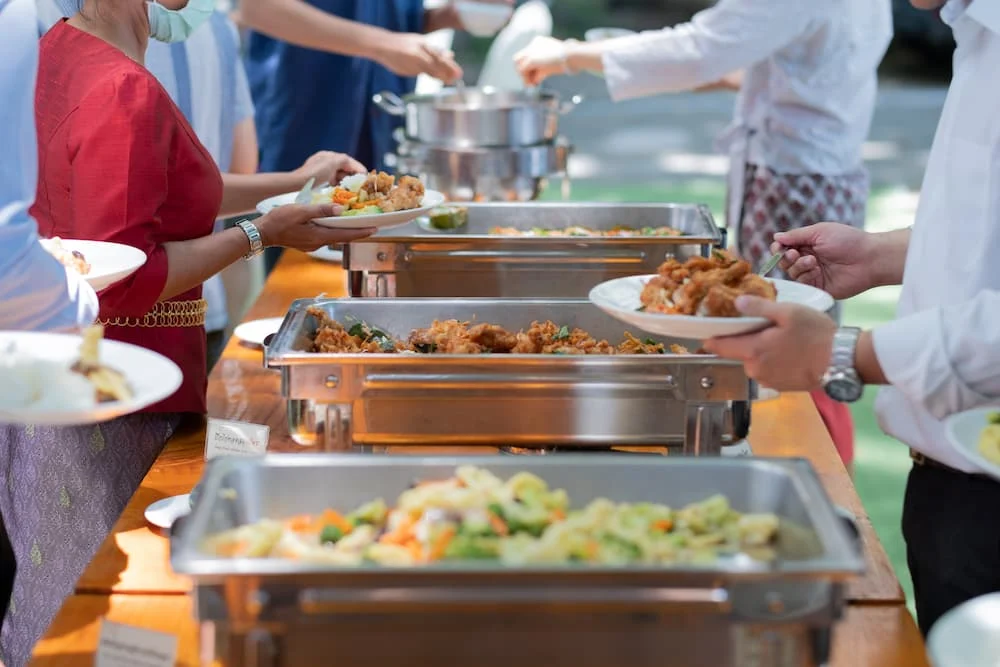Preventing Cross-Contamination in Self-Service Areas
Cross-contamination in self-service areas, such as buffets and salad bars, poses significant risks to food safety. Effective management practices are essential to minimize these risks and ensure a safe dining experience. This article explores comprehensive strategies to prevent cross-contamination in self-service environments, focusing on hygiene, monitoring, and customer education.
Understanding Cross-Contamination
Cross-contamination occurs when harmful bacteria or allergens are transferred from one surface or food item to another. This can happen through direct contact, airborne particles, or contaminated utensils. In self-service settings, the risk is heightened due to the high volume of customers and the shared use of serving utensils.
Key Strategies to Prevent Cross-Contamination
1. Staff Training and Monitoring
Training Staff:
- Hygiene Practices: Staff should be trained in personal hygiene, including regular handwashing and the importance of wearing gloves when handling food.
- Monitoring Procedures: Designate staff members to monitor self-service areas regularly. They should ensure cleanliness, restock supplies, and remove any contaminated food immediately.
Monitoring Cleanliness:
- Staff should clean and sanitize self-service areas every 20 to 30 minutes, especially during peak hours. This includes wiping down surfaces, checking for spills, and ensuring that serving utensils are clean.
2. Proper Use of Serving Utensils
Encouraging Utensil Use:
- Clean Serving Utensils: Provide an adequate supply of clean serving utensils to discourage customers from using their hands.
- Signage: Place clear signs encouraging customers to use utensils and reminding them not to touch food with their hands.
Utensil Storage:
- Store serving utensils on clean, sanitized surfaces. Ensure that handles do not touch food to prevent contamination.
3. Food Handling Practices
Single-Use Plates:
- Implement a policy that requires customers to use a fresh plate each time they return to the self-service area. This reduces the risk of cross-contamination from dirty plates.
Covering Food:
- When transporting food from the kitchen to the self-service area, ensure that containers are covered to prevent airborne contamination.
Food Temperature Monitoring:
- Regularly check and record food temperatures, keeping cold foods at 41°F (5°C) or below and hot foods at 135°F (57°C) or above.
4. Sneeze Guards and Barriers
Installation of Sneeze Guards:
- Use sneeze guards to protect food from airborne contaminants. These barriers should be strategically placed to cover all self-service food items.
Other Barriers:
- Consider additional barriers such as shields or partitions to further reduce contamination risks.
5. Customer Education
Visual Aids:
- Use visual aids, such as posters or digital screens, to educate customers about safe self-service practices. This includes reminders on using utensils and maintaining personal hygiene.
Hand Sanitizer Stations:
- Provide hand sanitizer stations near the self-service area to encourage customers to sanitize their hands before serving themselves.
Table: Best Practices for Preventing Cross-Contamination
| Strategy | Description |
|---|---|
| Staff Training | Train staff on hygiene and monitoring practices. |
| Clean Utensils | Ensure clean serving utensils are available and stored properly. |
| Single-Use Plates | Require fresh plates for each visit to the self-service area. |
| Food Temperature Monitoring | Regularly check food temperatures to maintain safety. |
| Sneeze Guards | Install sneeze guards to protect food from airborne contaminants. |
| Customer Education | Use signage and hand sanitizer stations to promote safe practices. |
Frequently Asked Questions (FAQ)
Q1: What are the most common sources of cross-contamination in self-service areas?A1: Common sources include dirty utensils, customers using their hands to serve food, and improper food storage practices.
Q2: How often should self-service areas be cleaned?A2: Self-service areas should be cleaned and sanitized at least every 20 to 30 minutes, or more frequently if needed.
Q3: What should be done if food is suspected to be contaminated?A3: Any suspected contaminated food should be removed immediately and discarded. Staff should then clean the area thoroughly.
Q4: How can customers be encouraged to follow safe serving practices?A4: Use clear signage, provide hand sanitizer, and train staff to remind customers about safe practices.
Q5: Are sneeze guards effective in preventing cross-contamination?A5: Yes, sneeze guards are effective in reducing the risk of airborne contamination and should be used in all self-service areas.
Conclusion
Preventing cross-contamination in self-service areas requires a multifaceted approach that includes staff training, proper food handling practices, and customer education. By implementing these strategies, operations can significantly reduce the risk of foodborne illnesses and ensure a safe dining experience for all customers. For more detailed guidelines, refer to resources like the Vermont Department of Health’s Self-Serve Food Safety Guidance.
Read more about it:https://greyhoundsverdevalley.com/how-to-change-fire-alarm-battery/



